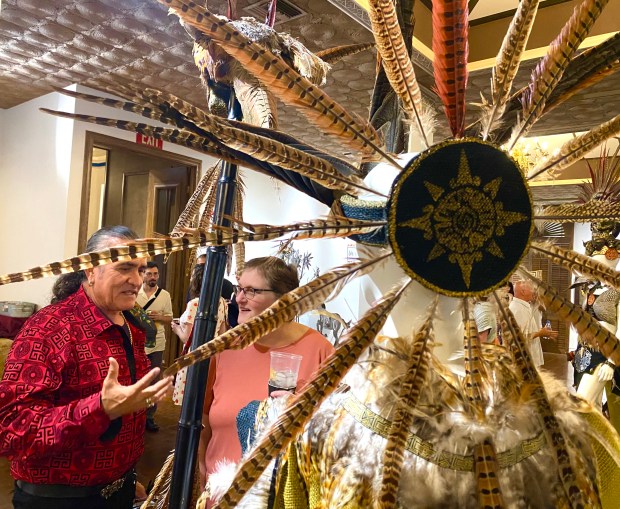The Vallejo Naval and Historical Museum hosted artists from across Bay Area on Saturday at the opening reception of its first Indigenous art show.
The show, “Reflective Art of an Indigenous People,” runs through Aug. 19. Dozens attended Saturday’s exhibition, including Vallejo City Council members Cristina Arriola, Charles Palmares, former council member Pippin Dew and county supervisor candidate Cassandra James.

Curator Askari Sowonde said she approached the museum in April with the idea for the gallery. A self-described multiculturalist, she stressed the importance of highlighting cultures that aren’t part of the mainstream. She said that’s important in a city such as Vallejo that is culturally diverse and faced with racial divide — galleries such as this one, Sowonde said, are the first steps in communities educating themselves and holding space for conversation.
“My place on this earth is, ‘Put your hand up, and bring somebody else with,’” she said. “That’s my charge.”
Artists on display such as Vallejo-based Midge Wagner have known Sowonde for more than 20 years. Others, says Sowonde, met her for the first time in preparation for the show, through artists she already knew.
In attendance on Saturday was Henry Frank, board president for Novato’s Museum of the American Indian. The Yurok and Pomo Nations artist led museum attendees through a spirit call song and discussed a LEGO model of the San Quentin State Prison yard on display that he created. Frank, who was released from the prison almost a decade ago, told the Marin Independent Journal in 2019 that he experienced a disconnect with his heritage until visiting the sweat lodges, where the spirits of animals would visit him.
“I am from laughter and smiles from camping, fishing and hitchhiking up and down the coast,” said Frank, reciting a spoken word piece that Sowonde requested he perform. “I am from violence, manipulation, and dehumanization, and I am from meth addiction, and marijuana addiction and alcohol.”
Vallejo artist Melissa Penny presented a sculpture she created in 2000 as a Chico State University student. It’s the sole surviving object from her parents’ home, which burnt down in the 2018 Camp Fire. She repaired the piece at the request of a former professor, a process she said reflected her coming into her womanhood.
“I’m no longer that 20-year-old girl,” Penny said. “That piece represented so much pain at that time, and I changed and made a metamorphosis. And I felt like my ancestors were there with me during that time.”
This post was originally published on this site be sure to check out more of their content.






